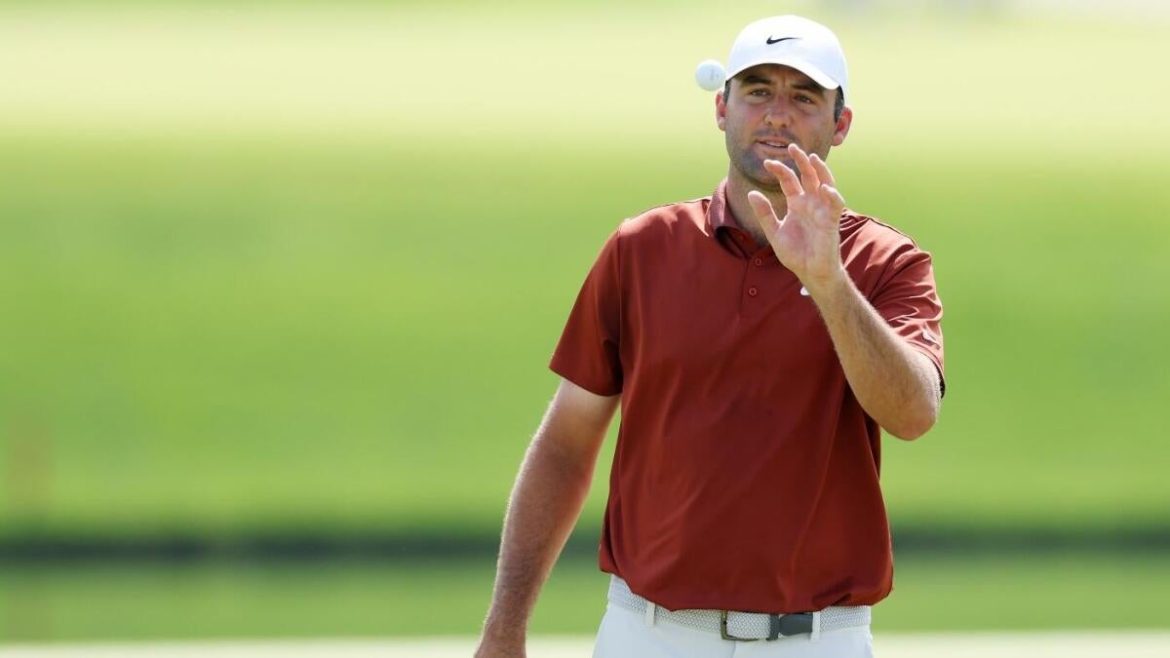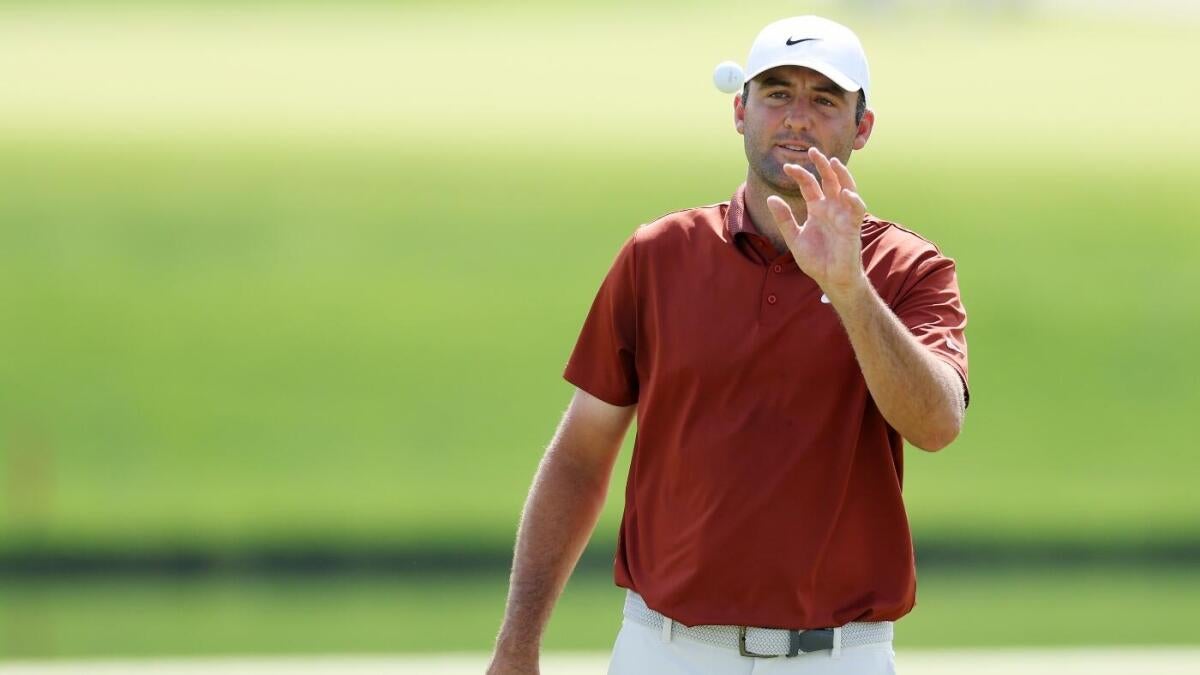The controversy surrounding “mud balls” at the 2025 PGA Championship has stirred significant debate among the tournament’s top players, prominently featuring World No. 1 Scottie Scheffler and World No. 3 Xander Schauffele. Their sharp criticisms of the tournament organizers’ decision not to allow players to lift, clean, and place their balls on fairways under muddy conditions have illuminated broader tensions about fairness, playing conditions, and the integrity of competitive golf. This report delves into the background of the issue, the players’ perspectives, the implications on competition, and reflections on potential ways forward.
Understanding the Mud Ball Dilemma
At the heart of the controversy is the tournament’s decision to play the first round “down” — meaning players could not lift, clean, and place their balls on fairways despite soggy and muddy conditions caused by several inches of rain preceding the event. Under these wet conditions, golf balls often pick up mud when landing on the fairway, creating “mud balls.” This mud can drastically affect the ball’s roll, trajectory, and spin upon being struck again, turning what should be routine shots into unpredictable gambles.
Scheffler, known for his precise ball-striking ability, explained the frustration succinctly: “It’s frustrating to hit the ball in the middle of the fairway and get mud on it and have no idea where it’s going to go.” The randomness introduced by mud-covered balls seems to undermine a facet of the game critical to the players—the skillful control of ball flight and placement.
Players’ Perspectives: Frustration and Calls for Change
Both Scottie Scheffler and Xander Schauffele were outspoken about the perceived unfairness of the situation. As top-ranked players with reputations for consistency and accuracy, they felt disadvantaged by a rules decision that seemed to punish precision. Schauffele described it as “almost a penalty to hit in the fairway,” underscoring the irony that playing accurately off the tee did not lead to a better position, but rather exposed players to the vagaries of mud accumulation.
Scheffler, generally measured in his remarks, used language like “kind of stupid” to describe the choice to enforce playing balls down in such wet conditions. It reflected not just momentary frustration but a deeper call for the tournament to strike a balance between tradition and fairness. The organizers’ refusal to permit “preferred lies” (the option to mark, lift, clean, and place the ball on fairway areas) despite obvious weather challenges was seen as a costly oversight.
Their criticism was not just about personal frustration but also about a more fundamental principle—ensuring the tournament truly measures skill under fair conditions. The mud ball predicament, as scheffler and schauffele see it, arguably turns a test of skill into a lottery of luck regarding mud splatter.
Consequences on Competition and Scoring
The impact of muddy conditions was most visible on key moments during the opening round. Notably, both Scheffler and Schauffele made double bogeys on the 16th hole where “mud balls” severely affected their shots from the fairway. The situation drew comparisons to past incidents where players’ scores suffered not from poor execution but from external factors out of their control.
The top players’ struggles raised questions about the equity of the playing conditions. If fairways become more punishing than roughs simply because of mud accumulation on the ball, the traditional playing strategy and shotmaking calculus might need reconsideration. This unpredictability can influence leaderboard standings and player psychology, turning potentially skilled performances into frustration-driven errors.
Tournament Organizers’ Role and the Spirit of the Game
The PGA of America’s choice to uphold a strict “play it as it lies” principle despite challenging weather represents a tension between maintaining tradition and adapting to unusual conditions. Golf’s rules often reflect a balance between preserving the game’s integrity and allowing flexibility when external conditions threaten fairness.
Scheffler’s and Schauffele’s comments spotlighted whether such rigid adherence served the players or the spirit of competition. Their appeals weren’t framed as assaults on tradition but as reasoned requests to consider fairness in the context of extraordinary weather and playing surfaces. The resulting “mud ball” chaos exposed potential gaps in the rules framework when applied to modern tournament play.
Looking Forward: Lessons and Potential Adaptations
The controversy at the 2025 PGA Championship serves as a case study for how professional golf might evolve its approach to adverse conditions. Potential solutions could include:
– Granting “preferred lies” in fairways when weather conditions leave standing water or heavy mud, giving players a chance to clean their ball and place it fairly.
– Adjusting guidelines on when to permit lifting in play to accommodate extraordinary conditions without undermining the challenge of the game.
– Incorporating player feedback more systematically in tournament rule decisions to balance tradition with practical fairness.
Such adaptations would not dilute the skill test but rather ensure it is assessed within equitable parameters. After all, the essence of competitive golf lies in players’ ability to measure skill accurately—not in randomness introduced by environmental factors beyond control.
Conclusion: A Call for Fair Play in Challenging Conditions
The mud ball episode at Quail Hollow during the 2025 PGA Championship underscores the nuanced challenges of managing fairness and tradition in professional golf. Scottie Scheffler and Xander Schauffele’s candid frustrations revealed how unforgiving and unpredictable conditions can detract from a true measure of skill, jeopardizing the integrity of competition. Their demands for reconsideration reflect a broader desire within the sport to maintain rigorous yet fair playing conditions, even in the face of adverse weather.
Balancing respect for the game’s longstanding rules with a pragmatic approach to fairness will be essential moving forward. This episode might catalyze thoughtful rule evolutions that preserve the spirit of golf while ensuring top players are tested on talent and not undone by stubbornly imposed regulations under soggy circumstances. Ultimately, fostering a “fairest test” requires openness, adaptability, and a commitment to fairness that resonates beyond tradition alone.





